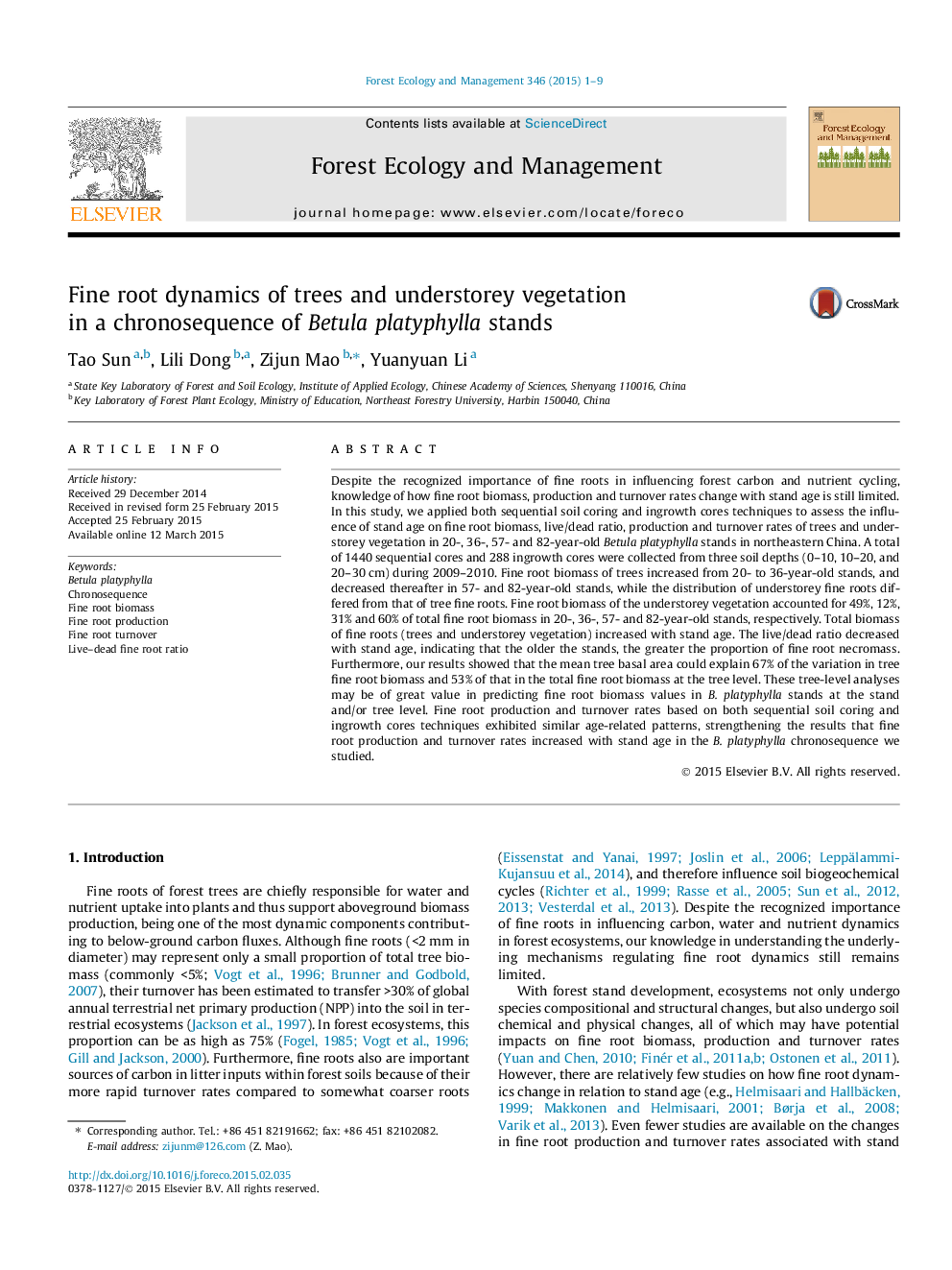| کد مقاله | کد نشریه | سال انتشار | مقاله انگلیسی | نسخه تمام متن |
|---|---|---|---|---|
| 86324 | 159179 | 2015 | 9 صفحه PDF | دانلود رایگان |

• Fine root dynamics in Betula platyphylla stands in relation to forest stand age.
• Total biomass of fine roots increased with forest stand age.
• Mean tree basal area could explain 67% of the variation in tree fine root biomass.
• The live/dead ratio decreased with forest stand age and soil depth.
• Fine root production and turnover rates increased with forest stand age.
Despite the recognized importance of fine roots in influencing forest carbon and nutrient cycling, knowledge of how fine root biomass, production and turnover rates change with stand age is still limited. In this study, we applied both sequential soil coring and ingrowth cores techniques to assess the influence of stand age on fine root biomass, live/dead ratio, production and turnover rates of trees and understorey vegetation in 20-, 36-, 57- and 82-year-old Betula platyphylla stands in northeastern China. A total of 1440 sequential cores and 288 ingrowth cores were collected from three soil depths (0–10, 10–20, and 20–30 cm) during 2009–2010. Fine root biomass of trees increased from 20- to 36-year-old stands, and decreased thereafter in 57- and 82-year-old stands, while the distribution of understorey fine roots differed from that of tree fine roots. Fine root biomass of the understorey vegetation accounted for 49%, 12%, 31% and 60% of total fine root biomass in 20-, 36-, 57- and 82-year-old stands, respectively. Total biomass of fine roots (trees and understorey vegetation) increased with stand age. The live/dead ratio decreased with stand age, indicating that the older the stands, the greater the proportion of fine root necromass. Furthermore, our results showed that the mean tree basal area could explain 67% of the variation in tree fine root biomass and 53% of that in the total fine root biomass at the tree level. These tree-level analyses may be of great value in predicting fine root biomass values in B.platyphylla stands at the stand and/or tree level. Fine root production and turnover rates based on both sequential soil coring and ingrowth cores techniques exhibited similar age-related patterns, strengthening the results that fine root production and turnover rates increased with stand age in the B.platyphylla chronosequence we studied.
Journal: Forest Ecology and Management - Volume 346, 15 June 2015, Pages 1–9